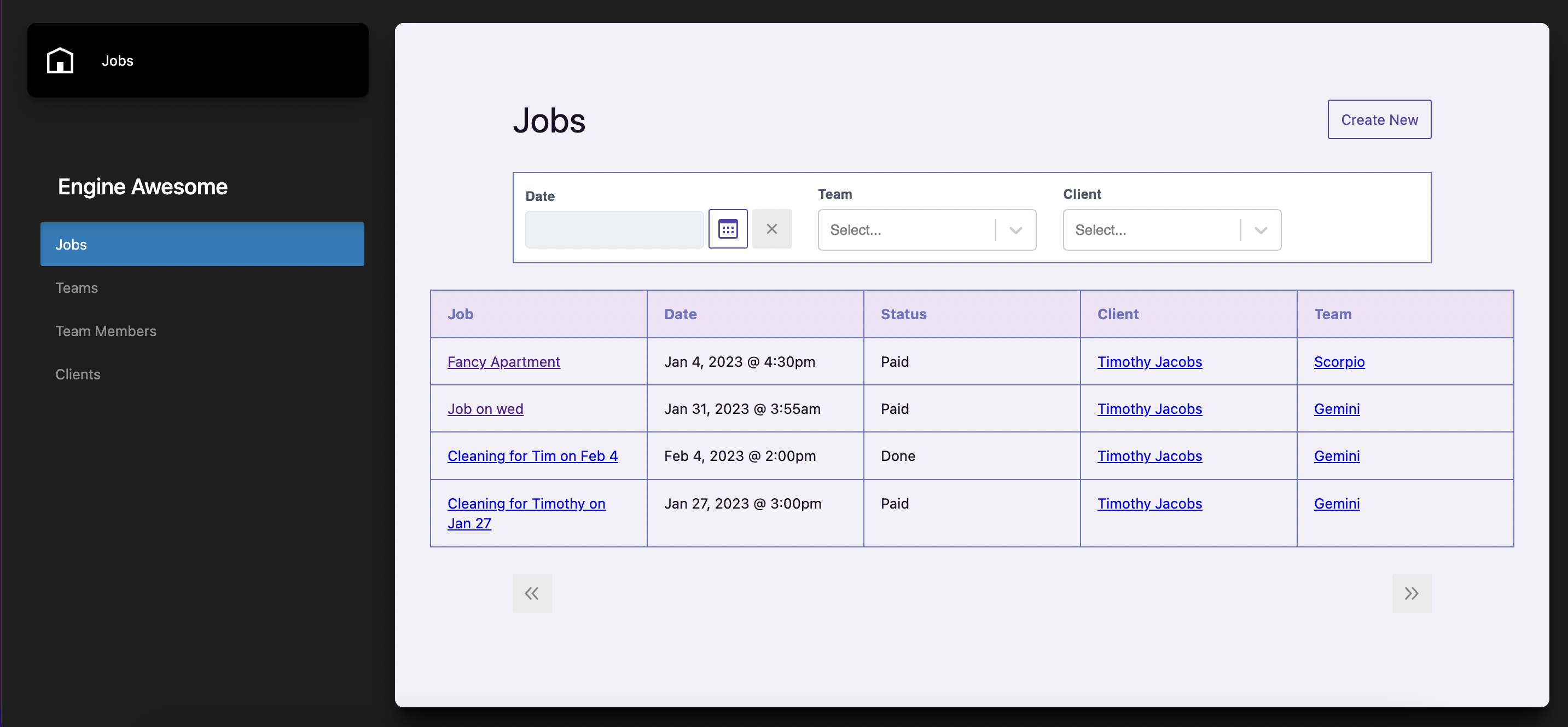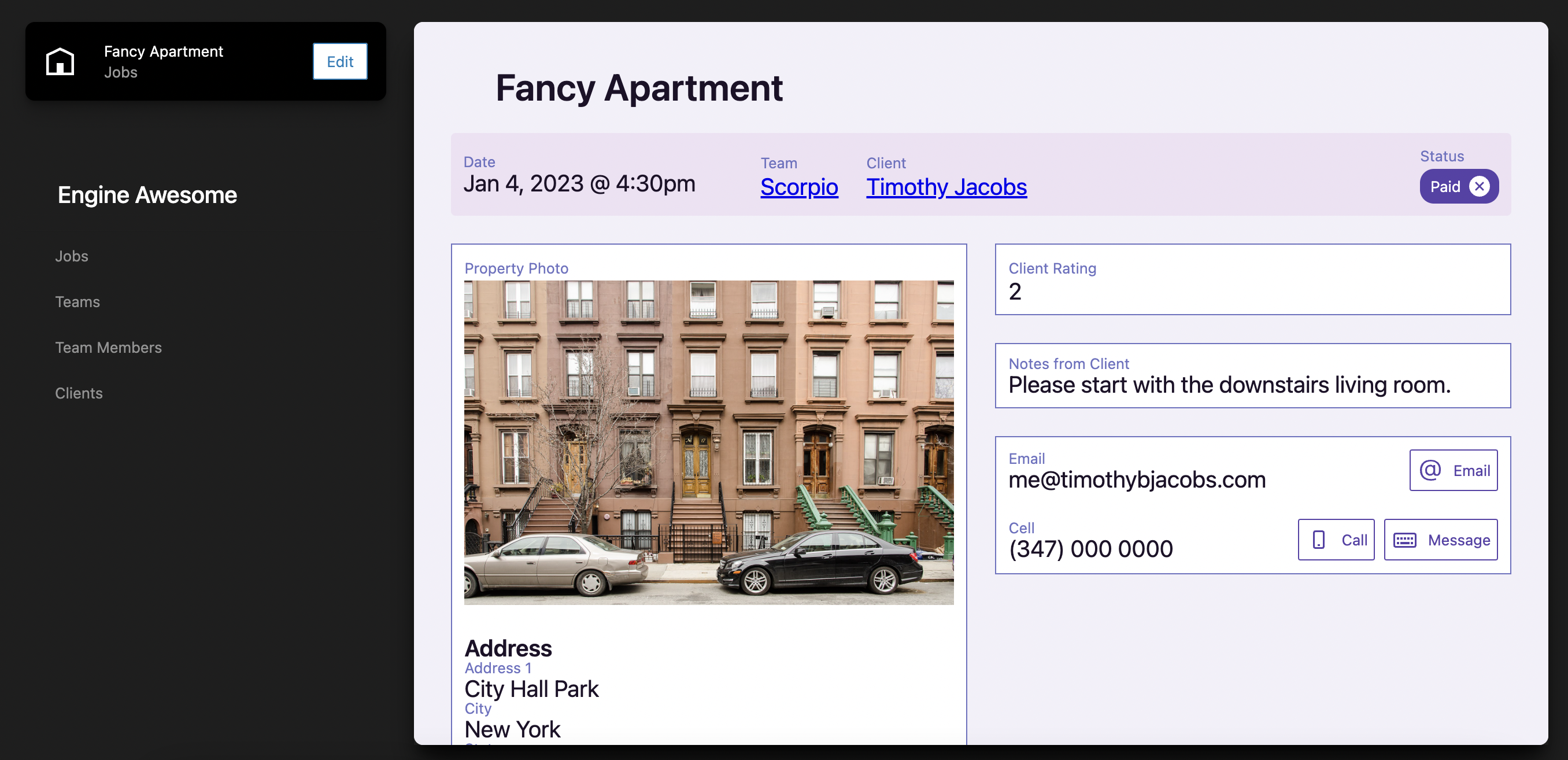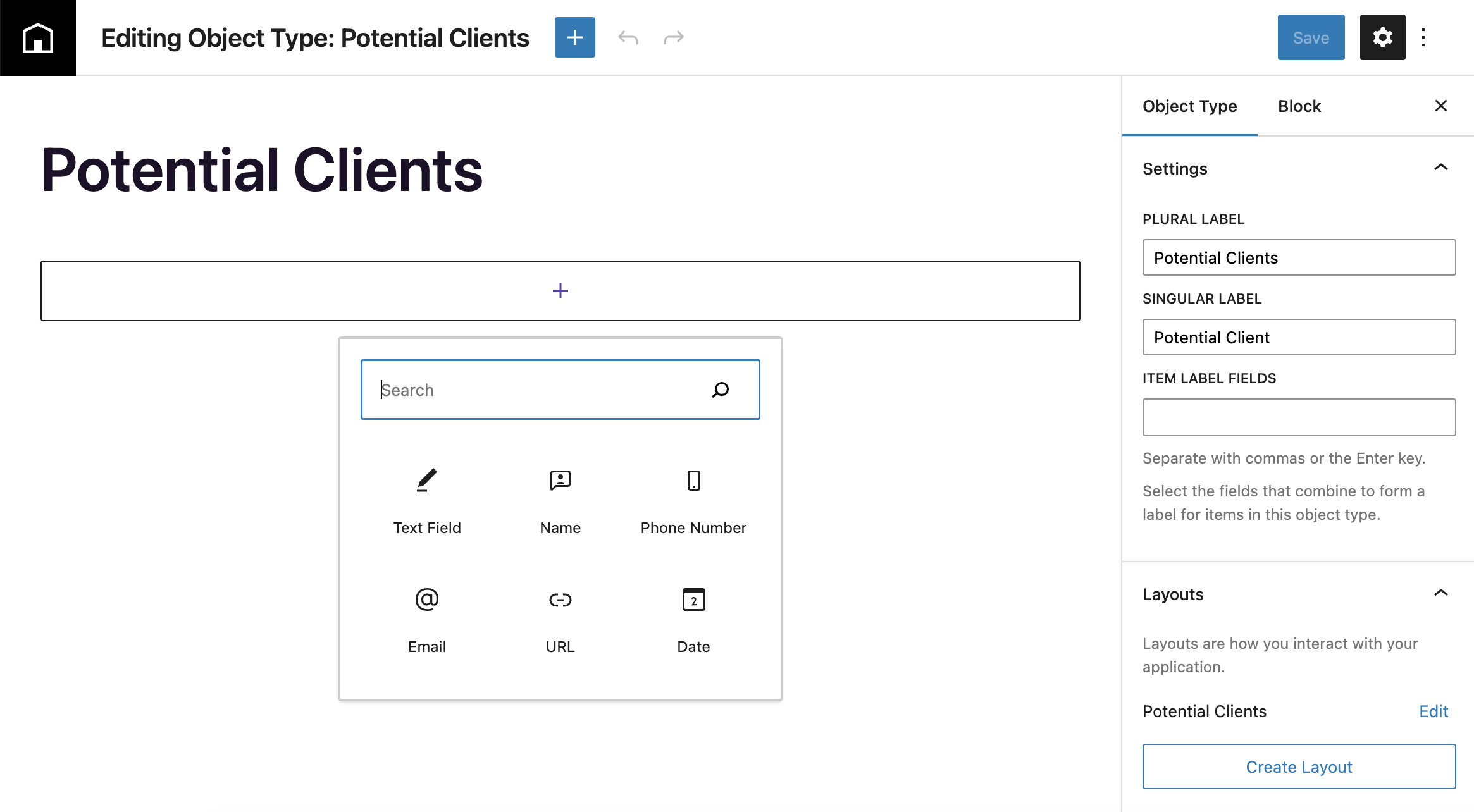During the 2022 State of the Word, Matt Mullenweg highlighted a few examples of how Gutenberg adoption is growing beyond WordPress and how he believed it could become “bigger than WordPress itself.” Engine Awesome, a Laravel-based SaaS application, is one example he cited that is using the block editor to allow customers to build their own custom applications.
Steve Bruner, SlipFire agency owner and former CEO of Piklist, and WordPress developer and core committer Timothy Jacobs, joined forces in 2022 to create Engine Awesome.
“All companies use unique processes and workflows to run their businesses,” Bruner said in the company’s launch post. “Even those in the same industry do things differently from their competitors. Unfortunately, today’s software does not allow for this flexibility. Instead, they feature defined rules, often forcing us to put square pegs in round holes. We want to change that.”
Engine Awesome is a no-code application builder where users can create object types (similar to custom post types) to store and organize their data. Here is an example from the dashboard of a demo application for cleaning jobs.

It offers a user-friendly interface for team members or others involved in managing the business to schedule and edit entries as work is completed.

On the application building side, users can easily add, edit, or delete object types and add a theme for the layouts.

Editing an object type looks very similar to the WordPress block editor. App creators can easily add fields that will be part of that object and drag and drop to rearrange them. Users can create relationships between object types for smart ways of organizing the app’s data. Engine Awesome is also set up to connect apps to more than 5,000 services via Zapier integration.

If the interface looks similar to WordPress, it’s because the front-end uses the same theme.json system as WordPress core to provide different themes and appearance options. In the future, Bruner said the apps created could automatically inherit the styles of a WordPress site by consuming its theme.json file.
“Engine Awesome is a SaaS application with a Laravel and Postgres backend,” Bruner said. “We chose MongoDB to store customer data because its document-oriented design allows our customers flexibility when choosing their fields.
“The front-end is a headless React application built primarily using the Gutenberg JavaScript packages. We use the Gutenberg packages directly instead of the Isolated Editor project as it affords us a higher degree of control and customization.”
Engine Awesome provides a user-friendly UI for tracking information that might otherwise be added to a spreadsheet. It gives users a more flexible way to manage their business data via an application designed for their needs, at a fraction of the cost of having a custom app created by a development company.
Engine Awesome is currently manually onboarding new customers as the company works on its pricing and signup process. Prices start at $10/month following a 30-day free trial which includes an initial Zoom call to help customers get up and running.
Bruner shared a few applications that customers have created using Engine Awesome:
- Shelly’s Organic Home Cleaning has four teams of three cleaners each. Each morning teams will log into Engine Awesome to see their upcoming jobs. Once at the location, they place the job in “cleaning” status and being. Upon completion, the job is placed in a “Done” status. Homeowners are automatically emailed when the job has started and when it ends. Once the cleaning service moves to credit cards, we will email a Stripe payment link upon completion.
- A Marketing company that builds interactive in-store displays is creating an application to manage them. Engine Awesome will hold product and store information, and the displays will update via our API.
- Homeowners Hub, a home repair concierge, is testing an application where their vendors create a quote in their own Engine Awesome account, which gets updated in the Homeowners Hub account—providing a direct integration between the two companies.
Bruner said the most popular feature is building a CRM with an activity feed. All of the applications these customers have created have various Zapier integrations that provide further automation.
The app builder is fairly simple right now but there are many possibilities the Engine Awesome team plans to explore in the future. The current roadmap includes the following planned features:
- Direct eCommerce functionality
- Integrated scheduling and booking
- Templates so users can get up and running quickly
- Front-end forms
- Enterprise features
It is exciting to see the block editor being used outside of WordPress but Bruner said Engine Awesome also plans on having a WordPress plugin that would deliver some of its functionality. The plugin specifics have not yet been nailed down, but the team is considering connecting WordPress sites to Engine Awesome to sync data. For example, WooCommerce customers could automatically be added to an Engine Awesome CRM.
“Down the road, we may include a version of the application builder in WordPress itself,” Bruner said. “Right now our focus is on making the SaaS product the best it can be.”
source https://wptavern.com/a-look-under-the-hood-at-engine-awesome-a-laravel-based-saas-app-using-gutenberg
Comments
Post a Comment